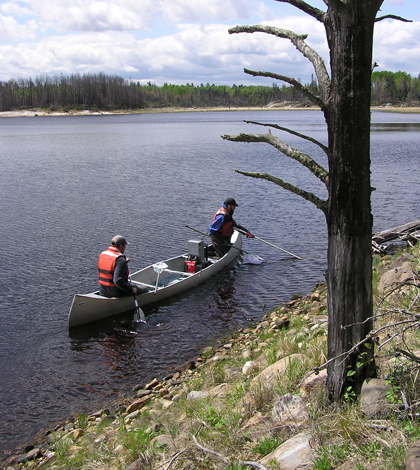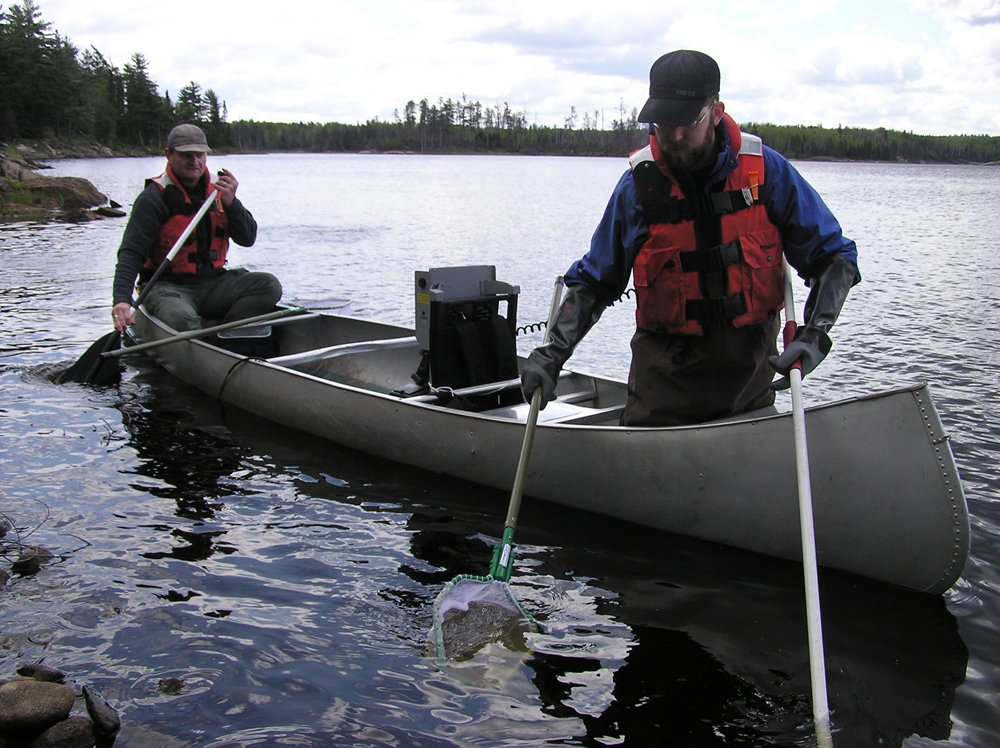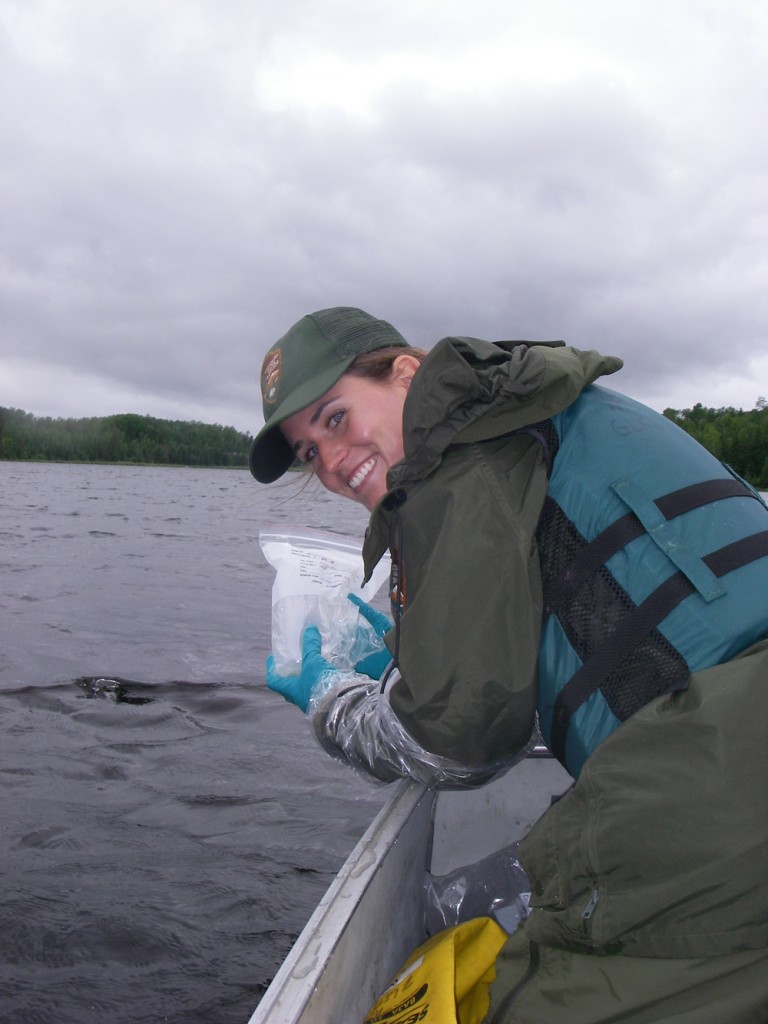Mercury contamination falling in northern Minnesota lakes’ water and fish

Mark Sandheinrich and Sean Bailey from the University of Wisconsin-LaCrosse, collect year-old yellow perch in Shoepack Lake (Credit: Mark Brigham)
Remote lakes in northern Minnesota are particularly sensitive to mercury contamination, and a new study shows concentrations of the chemical in the lakes and their fish are dropping.
Despite their isolation from urban and industrial sources, lakes within Voyageurs National Park in northern Minnesota are still vulnerable atmospheric mercury emissions — a source that’s decreasing in the United States but growing abroad.
Though the U.S. and Canada have taken steps to reduce mercury emissions, other nations are rapidly developing coal combustion and gold mining methods that send mercury into the atmosphere, according to Mark Brigham, a hydrologist with the U.S. Geological Survey in Minnesota.
A recently published study led by Brigham asked how those divergent trends have affected mercury concentrations in precipitation, lake water and fish tissue in four Voyageurs lakes.
“We know we are cleaning up our own house in terms of mercury emissions, but globally they’re increasing,” Brigham said. “So what’s the local effect of cleaning up your own house?”
The results of the study, published in Environmental Science & Technology, suggest that the effect is that mercury levels in raindrops are declining, and most lakes are responding accordingly, he said. Data from two precipitation monitoring sites near the lakes show a 32 percent drop in wet deposition rates from 1998 to 2012. Meanwhile, mercury concentrations in two of the lakes dropped an average of 46 percent in the water column and 34 percent in year-old yellow perch.

Mark Sandheinrich and Sean Bailey from the University of Wisconsin-LaCrosse, collect year-old yellow perch in Shoepack Lake (Credit: Mark Brigham)
Mercury levels actually increased in a third study lake, though Brigham said that might be the result of increased inflows over the study period from another especially contaminated lake upstream. There were no trends in the fourth lake, which had a fire in its watershed in 2004 and a significant beaver dam failure in 2001 that nearly cut its surface area in half.
The region’s lakes are especially prone to high mercury levels. Ryan Lake — one of the study sites — once held northern pike with mercury concentrations among the highest ever measured in the state’s gamefish. The lakes’ boggy watersheds are particularly adept at transforming the mercury that falls from the sky into a form more readily taken up into the food web.
“Wetlands have a lot of benefits, ecologically speaking. They’re good to have on the landscape,” Brigham said. “But that’s where a lot of the action happens as far as converting inorganic mercury to methylmercury.”

Jaime LeDuc from the National Park Service preparing to sample a study lakes for methylmercury analysis. (Credit: Joan Elias/National Park Service)
Hiking through those wetlands to sample the remote lakes presented some physical challenges, especially on hot days that ramped up the humidity and brought out the biting flies, Brigham said. But he loved it nonetheless.
“Most of my work nowadays is chained to a desk,” Brigham said. “The opportunity to get out and work in Voyageurs National Park where you strap a backpack on and carry your canoe paddles and hike into these remote lakes — I would take a permanent job doing that any day of the week.”
Top image: Mark Sandheinrich and Sean Bailey from the University of Wisconsin-LaCrosse, collect year-old yellow perch in Shoepack Lake (Credit: Mark Brigham)





0 comments